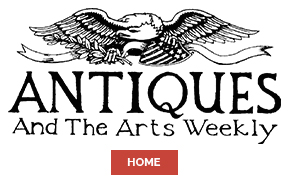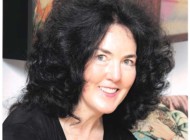
In May, Seth Armitage joined Heritage Auctions’ fine art department as co-director and senior specialist of European art. With more than 20 years of experience in Nineteenth Century European art and as a certified member of the Appraisers Association of America, Armitage brings a wealth of expertise to Heritage’s New York City office. We connected with Armitage to hear more about the new position and how he sees the department growing in the future.
Congratulations on the new role with Heritage! Could you share a little about your work and educational background and what led you to this current position?
My background is in Nineteenth Century art. As an undergrad at Vassar, my major was art history and I concentrated in Nineteenth Century American art. I continued that in my grad work at the University of Chicago, where I focused on Thomas Eakins — completing my master’s thesis on his photography. I was invited to join the PhD program but realized I wanted to experience a world outside of academia since I had gone to grad school right from undergrad.
While at Vassar for undergrad, I interned at Christie’s in the Impressionist and Modern department and, after such an exciting summer, I knew the auction world was something I wanted to explore further.
Luckily, there was an opportunity at Sotheby’s that came up soon after I left Chicago and came back to New York. Interestingly, it was at Sothebys.com in 2000, the company’s newly formed internet auction site — well ahead of its time. I was the administrator in the furniture and decorative arts department, and I later transferred into the traditional side of the business: I worked briefly in English furniture, and then very happily moved to the Nineteenth Century European Art department in 2004 as the cataloger. I had an amazing mentor in the then head of department, Polly Sartori, and knew the department was where I wanted to build my career.
I moved up through the ranks through the years, and by the time I left in 2021, I was head of the department. It was a fantastic tenure — I loved being part of the Sotheby’s family and had incredible experiences and amazing sales. One of many highlights was working with Sir Lawrence Alma Tadema’s, “The Finding of Moses,” which sold for $36 million, still the highest price achieved in the Nineteenth Century European art category.
After leaving Sotheby’s, I took a break and became a Certified member of the Appraisers Association of America, working with appraisal and advisory companies. This allowed me to keep my skills sharp and stay connected to the larger art world. As engaging as this experience was, I realized I really missed the auction world, collaborating with colleagues across specialties, and working with collectors, many of whom had become good friends over the years. Thankfully, the opportunity with Heritage presented itself.
From my very first meeting, I knew Heritage was the place I wanted to be. Everyone was so welcoming, generous and engaged. As the third-largest auction house in the world and the largest auction house founded in the United States, Heritage is a very important part of the art market. It has been on the vanguard; it is very dynamic and entrepreneurial, and there’s great energy and excitement here. The European art department has had great success, but I also saw an opportunity to meaningfully contribute my expertise and experience. I immediately clicked with my co-director, Marianne Berardi, PhD, and look forward to continuing to grow our market. It was also clear to me that the company strongly supports our efforts and provides us with the resources to excel. All in all, joining felt like the perfect opportunity at the perfect time. I feel very fortunate.
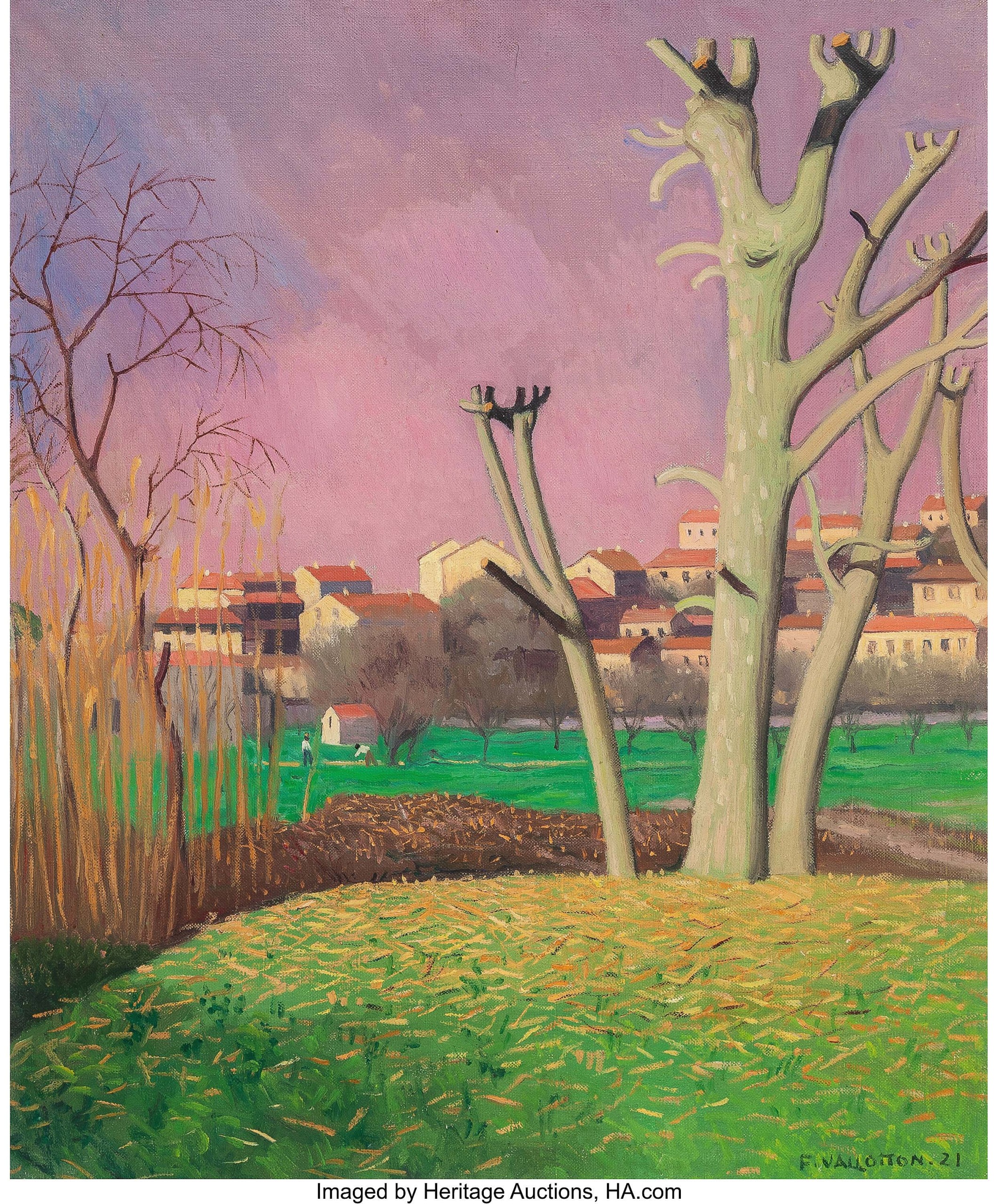
“Platanes ébranchés, Cagnes” by Félix Edouard Vallotton (Swiss, 1865-1925), 1921, oil on canvas, sold on June 5 for $84,375.
How has the transition to Heritage been for you so far?
In a word: great! I was at Sotheby’s for 20 years. The company went through many evolutions and changes, but I was an old timer — I knew how to do every little thing, I had every piece of history in my head. So, starting somewhere new was obviously overwhelming in the beginning. Thankfully, Heritage has made the transition as easy as possible.
Heritage is a very flexible and innovative company which listens to their staff and the specialists who work here. They’re very open to new ideas and trying new things, to push the boat out. I have also found Heritage’s internal and client-facing technology remarkable, allowing us to be efficient, creative and forward-thinking.
It’s also very client focused. Heritage places a lot of value in supporting their clients, welcoming them into the business — being transparent and building deep connections with clients that they’re adding season after season.
So that’s been exciting, because that very much aligns with my own personal philosophy of client service. These are people who you might meet bidding on one painting, but over the years have become part of the entire auction ecosystem. As we build collections together, they become friends and part of your community.
On June 5, you conducted your first Fine European Art sale at the helm for Heritage. Can you share a little about that experience and how it was for you?
I joined just as we were putting the catalog to press and it was fantastic to be part of the catalog design and to research and write notes, my favorite parts of the production process. While I joined too late in the season to be involved in the consignment side, I was able to help sell the sale. Some collectors I met for the first time, which is wonderful, while I was happy to reconnect with others I know well from over my years in the business. I was also able to introduce some collectors I’ve worked with in the past to the great opportunities for them at Heritage.
Thankfully, the sale did very well. We were thrilled with the results. There was great energy in the salesroom, particularly from our online bidders — that’s something that actually felt a little different to me in an exciting way. Heritage has been on the cutting edge of online bidding, and it was really thrilling to see how much activity came in through the Heritage Live platform and partner platforms like LiveAuctioneers — over 500 bidders! That felt like a huge impact to me, seeing how active and eager a multitude of bidders are at Heritage.
One bidder in the room was bidding for the first time on European art. They had participated in other Heritage category sales and just happened to see our exhibition in Dallas and became very engaged with the artwork. This is often what happens with European art because it is so visually interesting, or captures subjects that evoke a feeling or memory, and invites a connection with the viewer. I always look forward to meeting a new collector — it’s fascinating to learn what drew them to an object and in turn share what I love about our category. It’s always a welcome exchange of ideas.
And many bidders and buyers in our sale are not exclusively European art collectors. They either collect in other areas at Heritage — coins or collectibles for example — or they’re bidding for the first time. They might be buying one painting or beginning a collection. So, that was also exciting to see the variety and the depth of the bidding pool.
What were some of the highlights and takeaways from that sale?
At Sotheby’s I was focused on Nineteenth Century European art, but in our Heritage European sales we offer virtually the entirety of art history, from Old Masters up to the Impressionist period and beyond. What I was really impressed with was how there was active bidding on so many works within the six centuries of art we presented, from a rare oil from 1732 by Jean-Etienne Liotard all the way up to an exceptional Nabi landscape, painted in 1921 by Félix Vallotton, both top lots in the auction. I think this speaks to how well curated the sale was, to have a strong group of property within each era of art history that the department covers. While some collectors bought within a single period, others time-traveled, showing interest in works of widely different areas of the category.
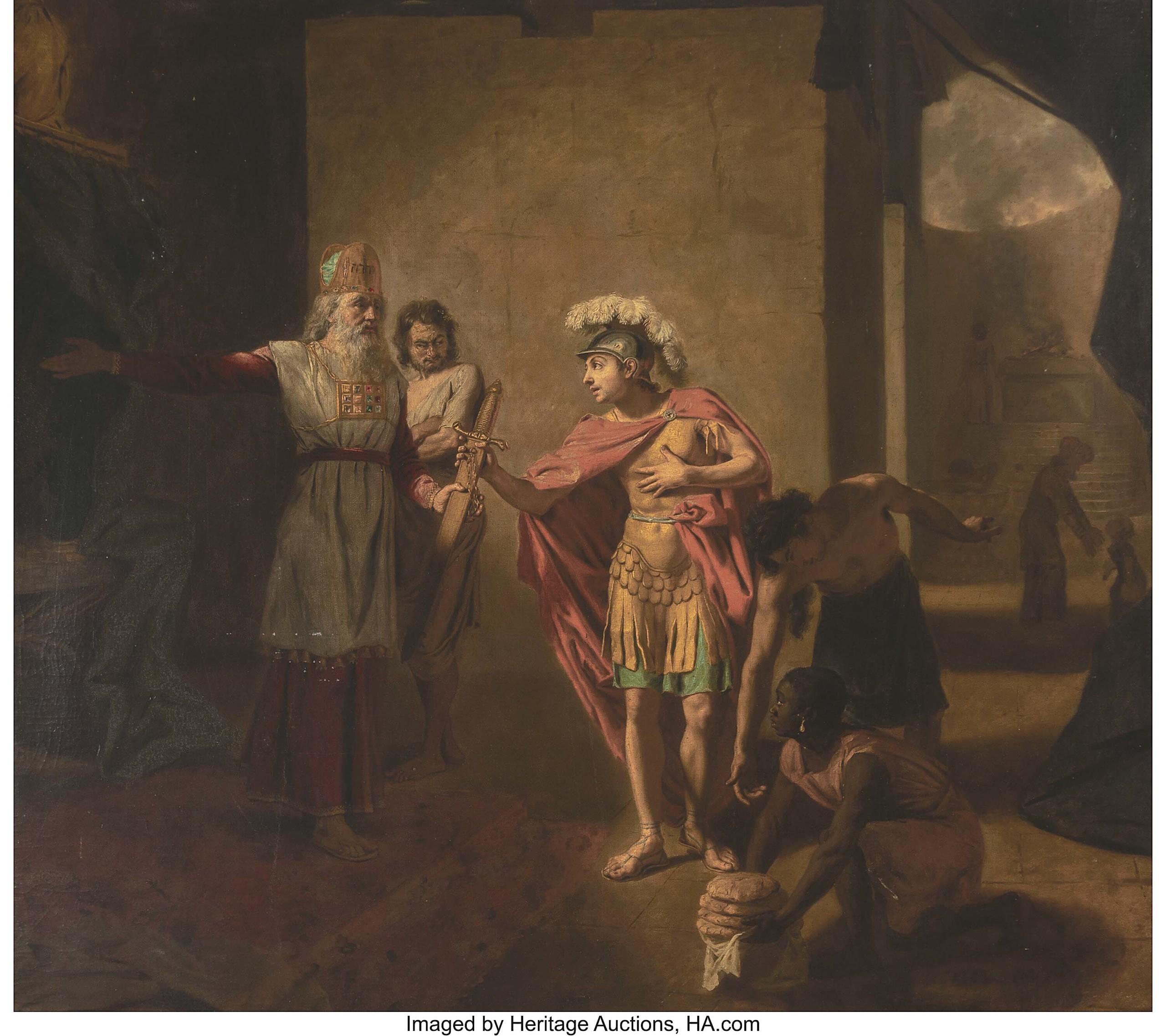
“Ahimelek presenting David the sword of Goliath” by Jean-Etienne Liotard (Swiss, 1702-1789),1732, oil on canvas, sold on June 5 for $100,000.
Have you seen the European art market responding in any way to the current economic uncertainty?
I think a lot of collectors are probably more selective and consider their bidding strategies and limits. At the same time, the June sale sold 92 percent by value and 86 percent by lot, which is a very strong result. People may be more considerate of their bidding but are still ready to raise their paddles, particularly for work that is fresh to market and well-priced. We are sensitive to the market trends and will continue to sensitively respond to them as we move through this year and beyond. I think there remain excellent opportunities for both sellers and buyers.
Do you have any insights or predictions about where you think the market is headed in the near future?
I think the recent seasons have shown how challenging predictions can be. Well-priced, fresh-to-market property is always going to find attention. I also feel that categories are breaking down more and more. People are less interested in collecting within one category and are open to being introduced to new things, they’re willing to step out of the box and make discoveries.
I think we will see more new and younger collectors. We had very traditional European works — like our cover lot for instance — Francesco Fontebasso’s studding “Fall of the Rebel Angels” from the private collection of William A. Glaser, which, though executed in circa 1736, had such a bold, modern feel to it that attracted some collectors who, at first, did not know who the artist was but were drawn to such a compelling image.
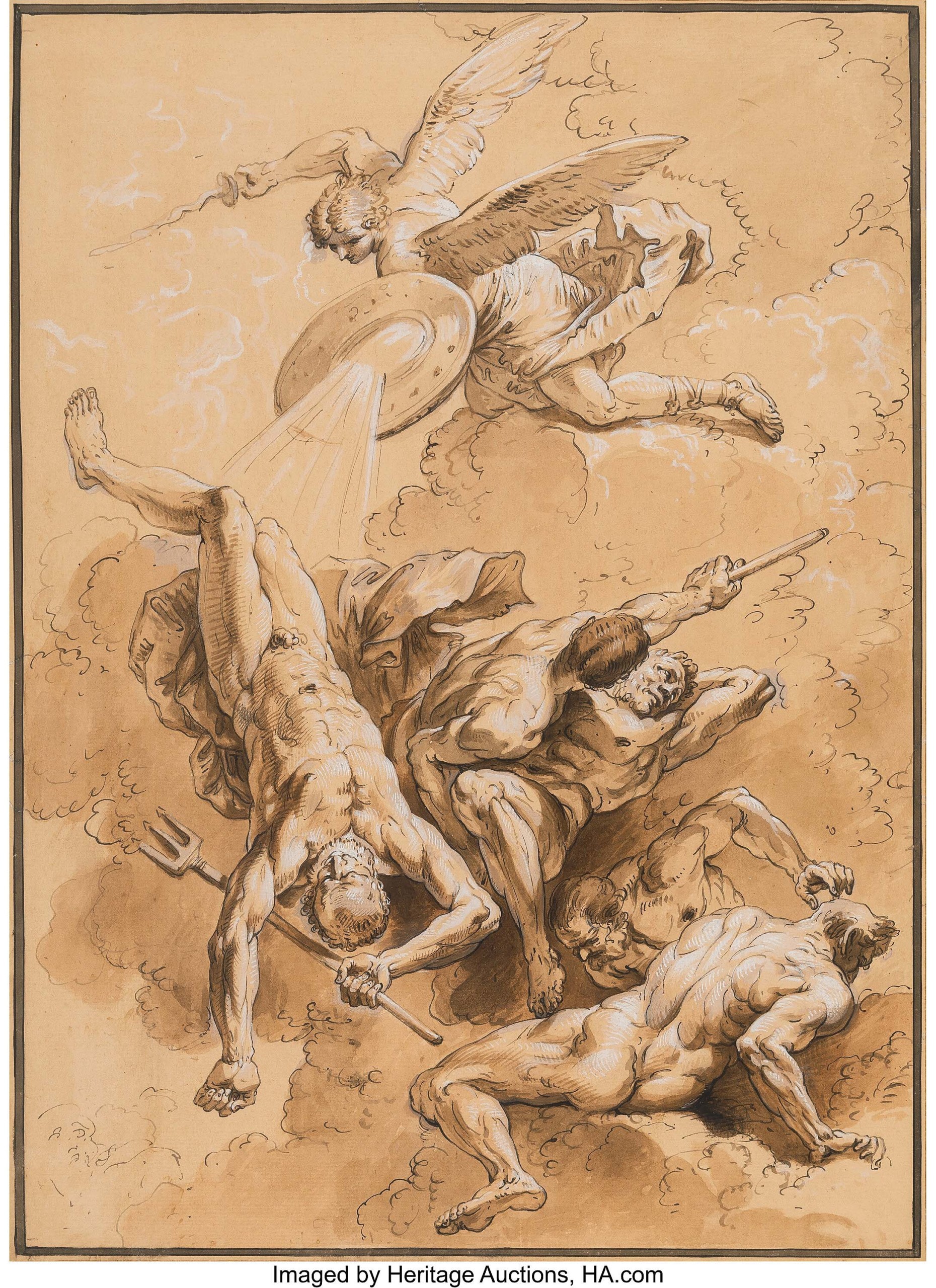
“Fall of the Rebel Angels” by Francesco Fontebasso (Italian, 1707-1769), circa 1736, ink, wash and gouache on tan laid paper, sold on June 5 for $5,750.
When is the next Fine European Art sale?
It is currently scheduled for December 5, and we are currently inviting consignments. We are working on some really exciting new projects and feel very optimistic about building on the strength of the June sale. It’s also exciting to see that the success of the sale has generated interest in consignors thinking about their next sale opportunity. And I should close by saying, I realize I’ve used the word “exciting” many times throughout our discussion, but here at Heritage that feels like the most appropriate word to describe the opportunities ahead.
—Carly Timpson
